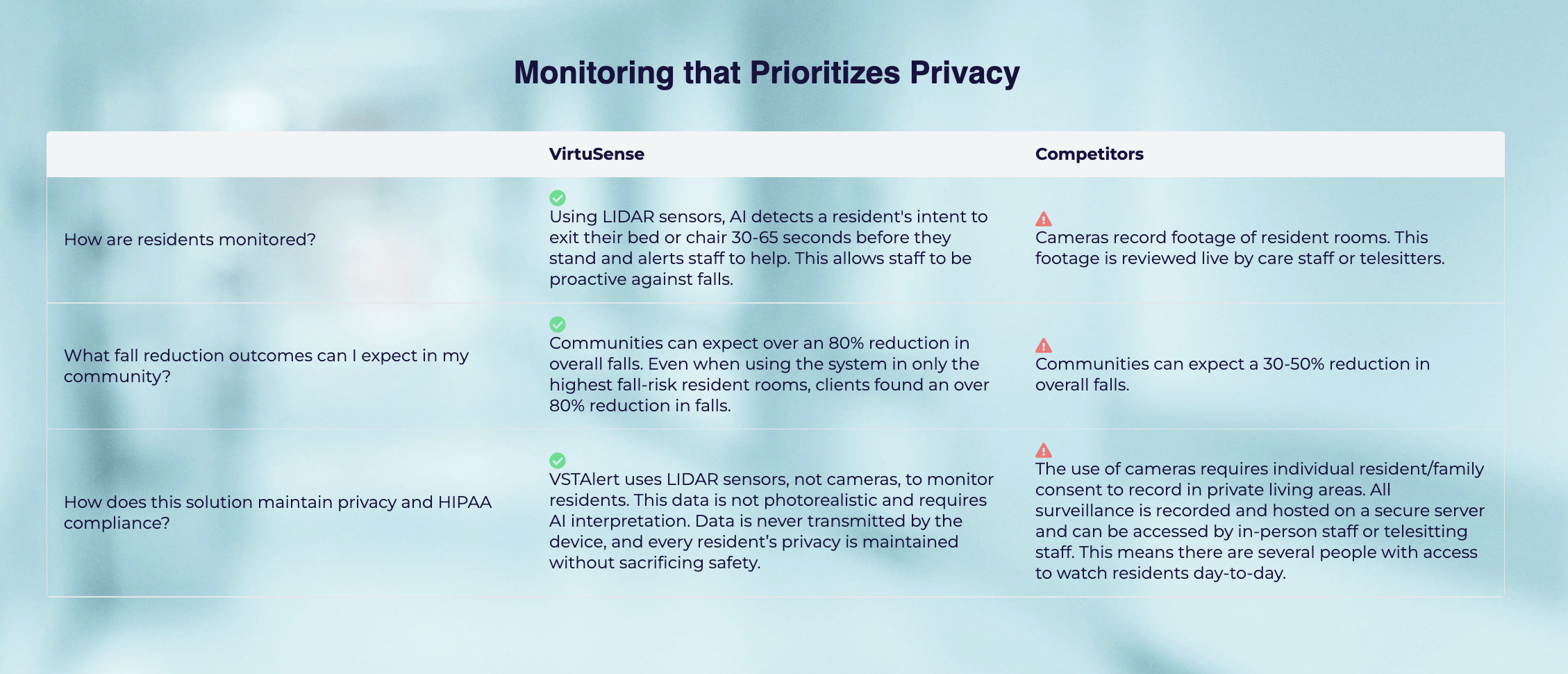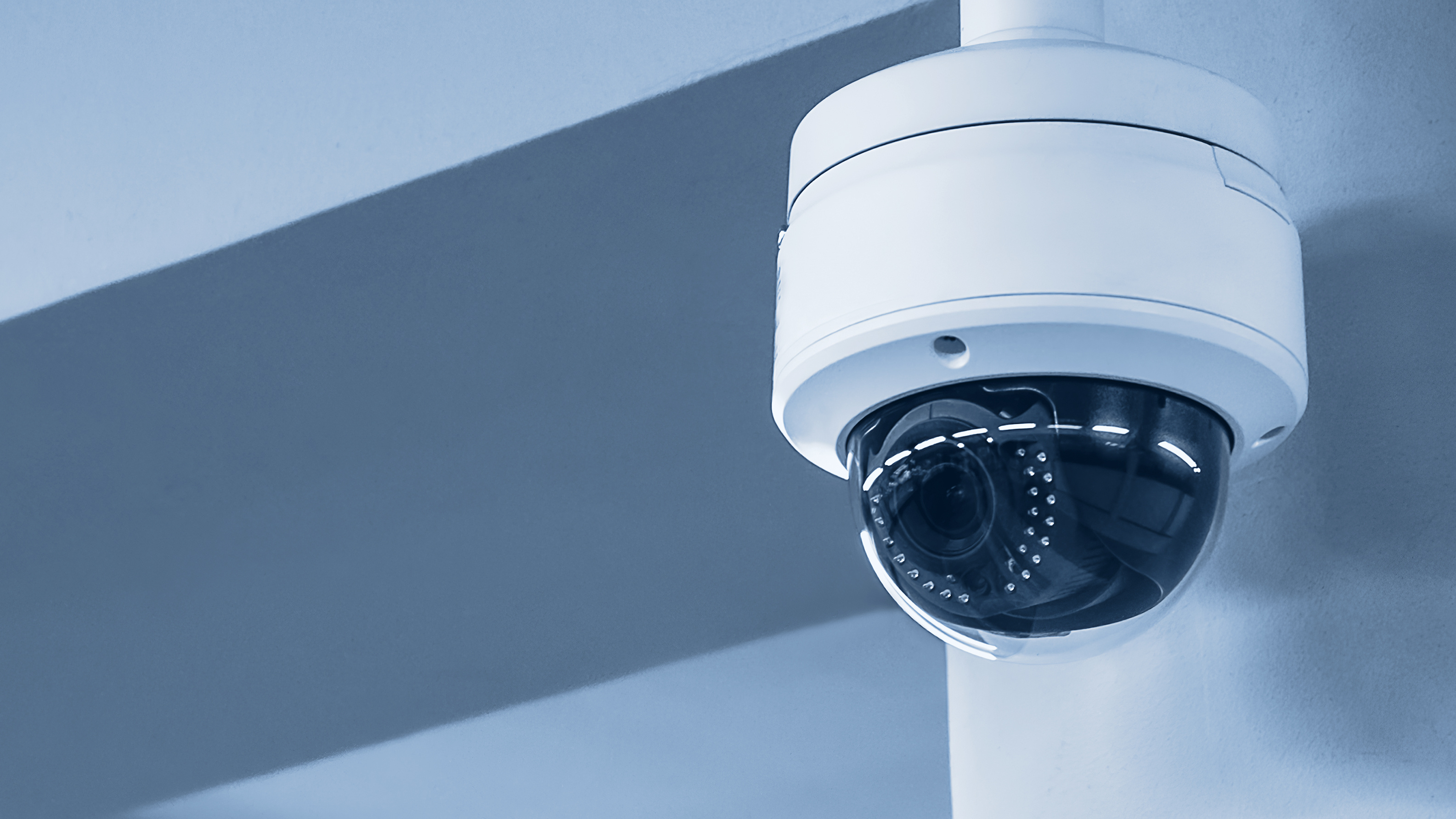Originally published February 2022. Updated August 2024.
As the pursuit of increased safety in long-term post-acute care (LTPAC) and senior living communities grows, many facilities are adopting resident monitoring solutions, particularly video surveillance. While the goal is often to enhance safety for vulnerable populations, the widespread use of in-room cameras opens the door to ethical, legal, and practical challenges. These must be carefully weighed against the perceived benefits of video monitoring.
Video surveillance, even when used with the best intentions, opens the door for both ethical and legal privacy violations.
The Delicate Balance: Safety vs. Privacy
Long-term care and senior living communities are more than just healthcare facilities — they are home to residents. As such, residents have the expectation of privacy, just like anyone else would in their home. For many residents, the ability to maintain personal privacy is critical to their dignity and quality of life. This is especially true for individuals who require extensive care, as their vulnerability can leave them feeling exposed.
Privacy is a cornerstone of trust in these settings. Residents and their families need to feel confident that their private lives are respected and protected. However, the introduction of in-room cameras can disrupt this sense of security. Instead of feeling safeguarded, residents might experience heightened discomfort, anxiety, and a sense of being constantly watched. These feelings can erode trust and negatively impact the resident's mental and emotional well-being.
Navigating HIPAA and Legal Concerns
In addition to ethical concerns, the use of in-room cameras can put your community at risk of HIPAA violations and privacy litigation. HIPAA sets stringent standards for protecting the privacy of individuals’ health information, and any breach can result in severe penalties.
When using cameras for fall prevention, HIPAA requires that facilities get consent from residents or their legal representatives before being recorded. Facilities must take steps to ensure that residents who do not provide consent are not inadvertently recorded. Failure to manage this can lead to unauthorized recordings, which could result in privacy violations and subsequent litigation.
Some senior living communities have attempted to address this issue by incorporating privacy waivers into resident agreements. These waivers typically ask residents to consent to video monitoring as a condition of their stay. However, this approach can backfire. Prospective residents and their families may view such blanket consent requests as a red flag, pushing them to seek alternative care options where privacy is better protected. This could result in lost revenue and damage to the facility’s reputation.
Are the Benefits of In-Room Camera Monitoring Worth the Risk?
Given the ethical and legal complexities, one might assume that in-room camera monitoring delivers exceptional results in fall prevention. Unfortunately, the evidence paints a different picture. A study conducted by Johns Hopkins University found that virtual sitters — staff members who monitor residents via video feeds — only reduced falls by 7%. This modest reduction highlights a critical limitation: video surveillance does not prevent falls; it merely records them as they occur.
The core function of video monitoring is to alert staff when a fall happens, allowing them to respond quickly. While this can reduce the severity of injuries by promptly sending help, it does not address the root cause of falls or prevent them from happening in the first place. Video surveillance is a reactive tool, not a preventive one.
Related Read: Tech That Stops Falls Instead of Recording Them
Non-Surveillance Predictive Fall Prevention Technology
The debate between safety and surveillance in LTPAC communities is not easily resolved. While in-room cameras offer some benefits in terms of monitoring, their drawbacks—including potential privacy violations and limited effectiveness in fall prevention—are significant. Technologies like VSTAlert, which use LIDAR sensors, provide a compelling alternative by offering proactive fall prevention without compromising resident privacy.

As the industry continues to evolve, it’s crucial for LTPAC communities to stay informed about emerging technologies and to carefully consider the ethical and legal implications of their safety measures. By prioritizing both privacy and proactive safety, facilities can build trust with residents and their families, ultimately enhancing the quality of care they provide.
Learn more about how 100% HIPPA-compliant predictive fall prevention tech can help your LTPAC proactively identify and prevent falls.

